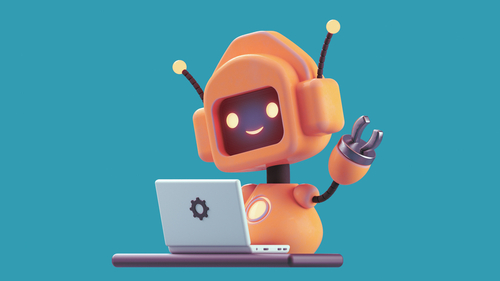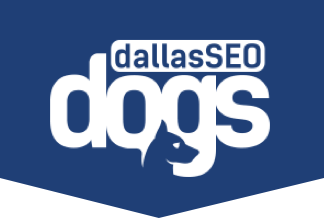So You Want to Build a Chatbot

Chatbots can be valuable to your content marketing strategy, enhancing your guests’ user experience and driving engagement. Integrating chatbots into your content marketing efforts means creating personalized, interactive experiences that resonate with your audience and improve outcomes.
Let’s explore some reasons for integrating chatbots with your other content, the qualities to look for in your chatbot platform, and several platform possibilities.
Chatbot Basics
Before we get into how a chatbot can positively impact your SEO, let’s review a step-by-step guide detailing the chatbot creation process.
Step 1: Define the purpose of your chatbot and what tasks it should perform. Identify the specific scope of areas it will cover to be sure it meets your users’ needs.
Step 2: Choose a platform for building your chatbot, like Facebook Messenger or Slack, or use a custom framework like Dialogflow or Microsoft Bot Framework, which we’ll discuss below.
Step 3: Create a script outlining conversational flow — how the bot will interact with users. Define different user inputs and their corresponding bot responses in various scenarios.
Step 4: Gather and prepare training data. This data could include existing FAQs, documents, and/or any other relevant information for providing accurate responses.
Step 5: Train the Chatbot with machine learning (ML) techniques. In a platform like Dialogflow, you can provide example conversations and tag the intents and entities within them. The chatbot will learn to understand user inputs and generate appropriate responses.
Step 6: Implement Natural Language Processing (NLP) capabilities, which help the chatbot understand and interpret user inputs in a more human manner. It involves tasks like tokenization, entity recognition, and sentiment analysis.
Step 7: Implement the conversation flow and connect it to the NLP engine. Test the bot thoroughly to be sure it responds accurately and handles different scenarios correctly. Iteratively refine and improve the bot based on user feedback and testing.
Step 8: Deploy the Chatbot to the desired platform or integrate it with your website or application. Make sure it’s accessible, glitch-free, and available to users.
Step 9: Continuously monitor performance and user feedback. Analyze user interactions, identify areas for improvement, and make necessary adjustments to enhance the chatbot’s functionality and user experience.
Step 10: Evolve! As your bot gets more user interactions and feedback, you can refine its responses, add new features and expand its capabilities to meet any changing user needs.
Aligning Your Chatbot Objectives
Before attempting to include chatbots in your search engine optimization (SEO) or content strategy, clearly define your objectives and goals. Aligning these with your content’s aims ensures consistency and focus, maximizing the efficacy and effect of your efforts.
Driving User Engagement
A chatbot can create a more dynamic and immersive user experience. Imagine a travel company chatbot helping you plan a dream vacation simply by answering questions about destinations, flights, and accommodations, and could even suggest activities and attractions based on your interests and preferences.
This would mean a more engaging interaction than on a traditional website, more like having a conversation than doing a simple transaction.
Personalizing Content
Chatbots can offer personalized recommendations based on users’ behavior and history. For example, a chatbot for an e-commerce company could recommend products based on users’ purchase and search history and their demonstrated or expressed preferences.
The chatbot can even ask questions to help it understand user needs and recommend products that fit them.
A personalized experience increases audience engagement and builds loyalty by showing that you understand your customers and what makes each of them unique.
Boosting Conversions
Chatbots can guide users through the conversion funnel, from initial discovery to final purchase. For example, an online retailer’s chatbot could help users find the right product, answer questions about shipping and returns, and guide visitors throughout checkout.
The chatbot could also offer personalized recommendations based on the user’s behavior and preferences, which help increase the chances of a successful sale.
Chatbots boost conversions and increase revenue by nurturing leads and providing a customized experience.
Choosing the Right Chatbot Platform
As you’ll see, many chatbot platforms are available, each offering a range of features and capabilities. Consider the following factors when selecting your platform:
Compatibility
When selecting a chatbot, you must consider compatibility with your existing setup. This includes content management systems (CMS), marketing automation tools, and analytics. The best platform for you will integrate seamlessly with your current systems, so you can easily manage and analyze chatbot interactions along with your other marketing and business data.
Scalability
As your business grows, so will the volume of both traffic and content. Choose a platform that can scale with this growth, handling a larger volume of users and interactions without slowing down or crashing.
Consider the platform’s ability to manage a large volume of content: product descriptions, FAQs, and any other information your bot may need to access instantly.
Customization
Every business is unique. Choose a chatbot with enough flexibility to customize your chatbot interactions. This includes the language and tone of the chatbot, the types of questions, and the overall flow of conversation. Align your chatbot with your brand to create a unique experience that differentiates you from your competitors.
Major Chatbot Platforms to Explore
Several top chatbot platforms are on the market, each with its strengths and weaknesses.
Dialogflow
Dialogflow is a popular Google-built platform that uses natural language processing (NLP) to understand user input and respond to it. This means that Dialogflow can interpret user messages and provide appropriate responses more conversationally, like how humans communicate. As a result, it makes the chatbot experience more engaging and natural for users.
Dialogflow is easy to use, has a user-friendly interface, and supports a wide range of integrations. It also offers advanced features like custom webhook integrations, which allow you to connect a chatbot to external systems like CRMs and payment gateways. The platform also provides sentiment analysis, which helps you understand the tone and emotion behind user messages, and machine learning, by which the chatbot can learn and improve over time.
Microsoft Bot Framework
The Microsoft Bot Framework (MBF) is a comprehensive platform that provides a suite of tools and services to help you build, test and deploy chatbots. It includes tools for designing conversation flow, testing/debugging, and getting your chatbot out to various channels.
MBF offers a wide range of software development kits (SDKs) for popular programming languages like C#, Node.js, and Python, so you can develop your chatbot using the language you’re most comfortable with. The platform also integrates with various channels, like Facebook Messenger, Skype, and Slack, making it easy to reach users across multiple platforms.
MBF meets enterprise-level security requirements, including support for OAuth and OpenID Connect authentication protocols, which means the chatbot can securely access external systems without compromising the user’s data.
IBM Watson Assistant
IBM Watson Assistant is a chatbot platform that uses AI to understand and respond to user queries. This means the chatbot can interpret natural language input from users and provide relevant responses. In addition, it offers advanced features like entity recognition and dialog management, which allow it to understand the context of a user request and give more accurate responses.
Watson has a visual dialog editor that makes it easy to build and test chatbots. It lets you create conversation flows and responses without needing to write code, vastly speeding up development time and making more complex chatbots easier to create.
Amazon Lex
Lex stems from Amazon Web Services (AWS), meaning it’s integrated with other AWS services. That makes creating and deploying chatbots within the AWS ecosystem easy and takes advantage of AWS’s robust security and scalability features.
Amazon Lex provides NLP capabilities, and it’s simple to deploy chatbots to channels like Facebook Messenger and Slack. It’s also designed to be scalable, meaning it can handle large request volumes and traffic without slowing down or crashing.
Wit.ai
Wit.ai is a natural language processing (NLP) platform that allows developers to integrate conversational interfaces into their applications or services. It provides tools and resources to build interactive chatbots, voice-controlled devices, and other applications that can understand and respond to human language.
In addition to its core NLP capabilities, Wit.ai offers built-in features such as speech recognition, sentiment analysis, and conversation flow management. These features enhance the conversational experience by enabling applications to process spoken input, analyze emotions expressed in text, and manage the flow and context of a conversation.
Create Your Content Strategy with Dallas SEO Dogs
Struggling to come up with fresh and engaging content for your website? Let Dallas SEO Dogs help you create a content plan to drive traffic and engagement to your site. Contact us today to schedule a consultation and get started!
